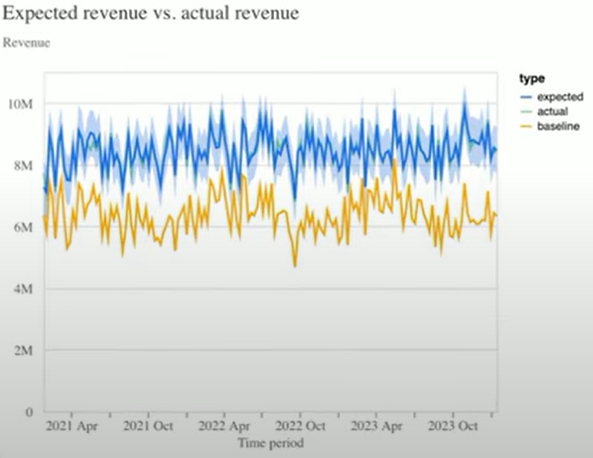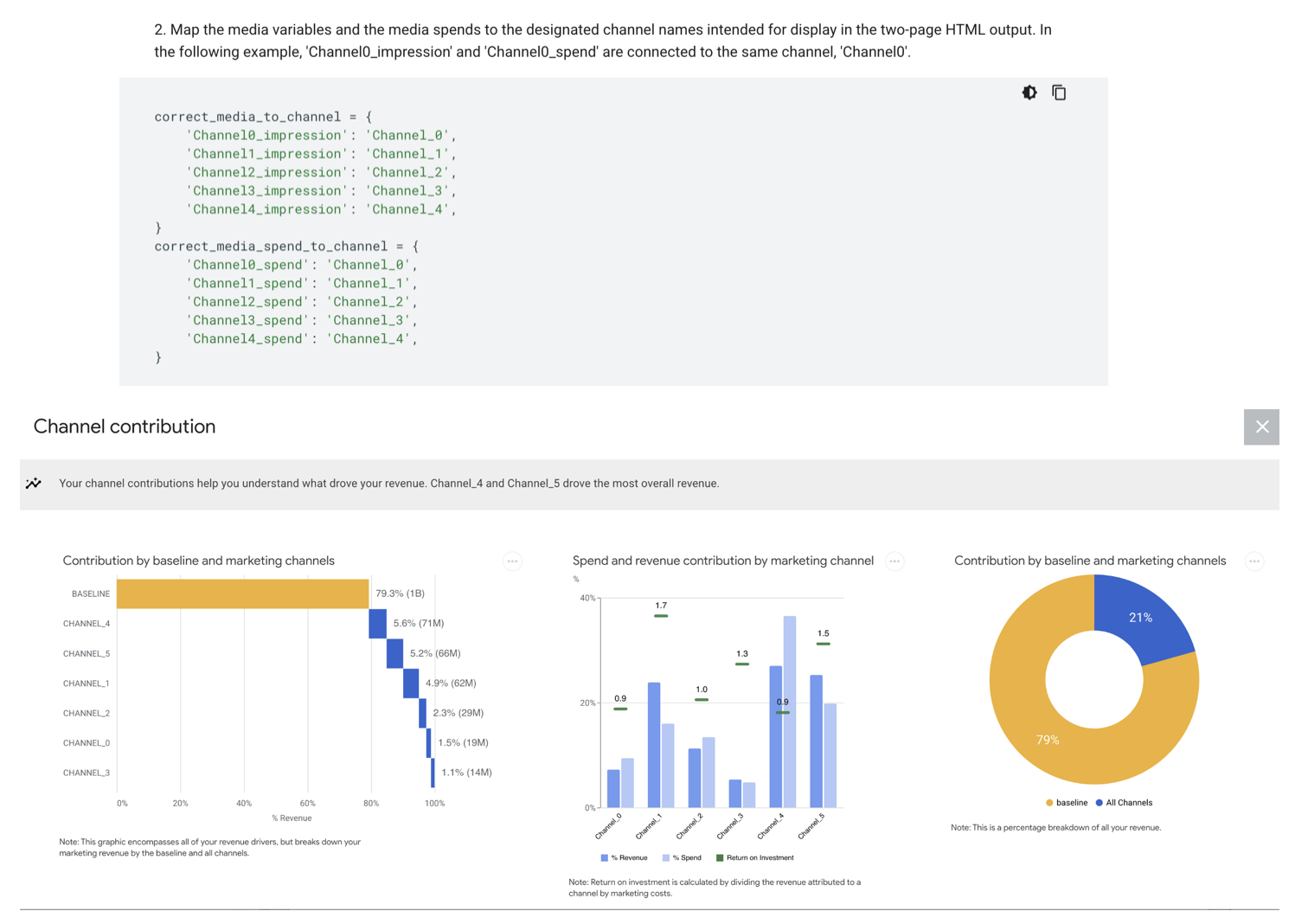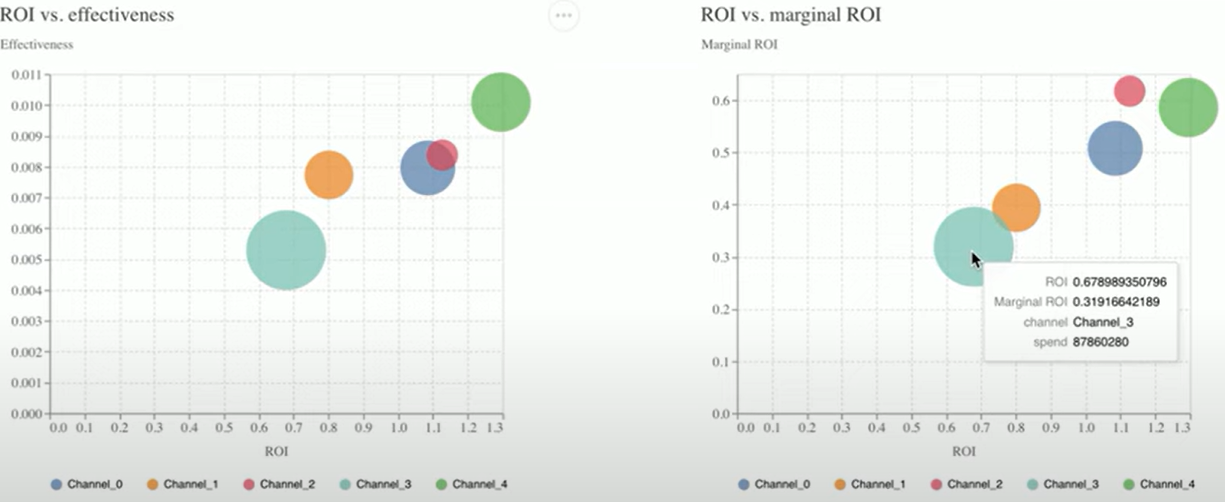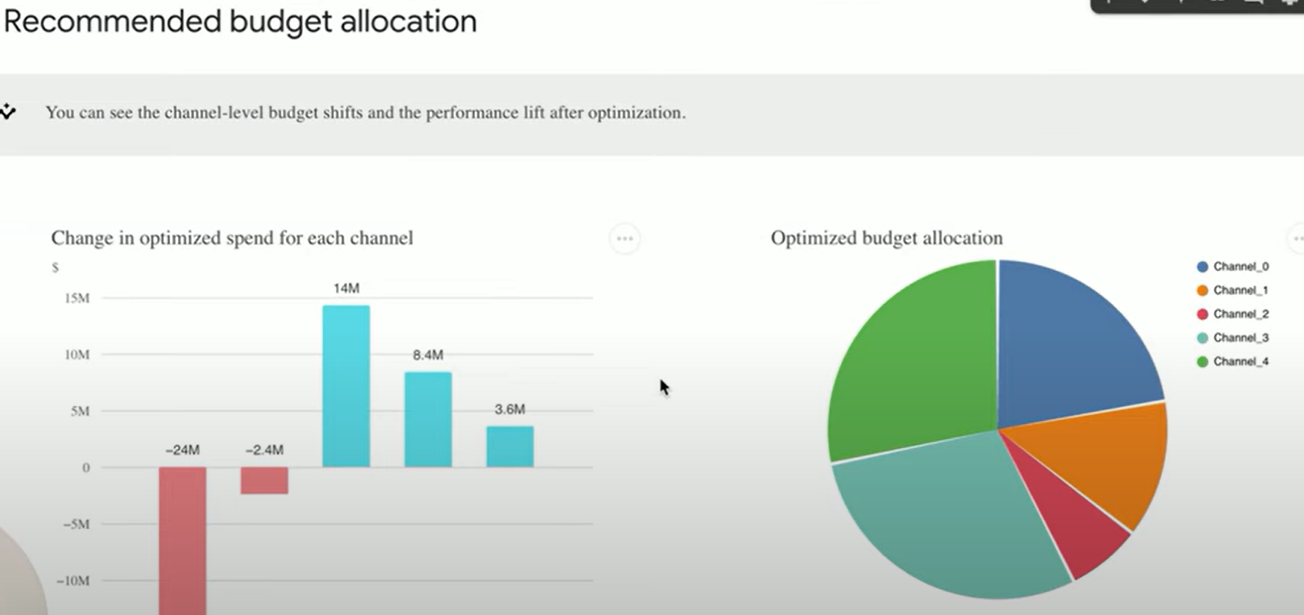In late January 2025, Google launched Meridian, their new media mix model (MMM) platform designed to improve marketing attribution and measure the impact of budgets across channels — all while respecting user privacy.
In this post, we explain what Google Meridian is and who it might help, discussing how its features translate to real-world benefits, as well as potential limitations.
What is Google Meridian?
Google Meridian is an open source media mix model (also referred to as a marketing mix model). It’s by no means the first of its kind, but it offers a few innovative appointments geared towards helping users address modern measurement challenges.
Google Meridian isn't a programme you click on with an icon. It's a collection of code files. You download these files, and then you use the Python programming language to instruct your computer to run that code. It then processes data and delivers numerical results. It's not a double-click install application; it's a Python codebase.
Meridian replaces Google’s previous MMM offering, Lightweight MMM, an intermediary solution while Meridian was in development.
What is media mix modelling?
Media mix modelling is a cookieless data analysis framework for measuring how different marketing campaigns and channels — like TV, social media, search ads, and email — contribute towards marketing goals.
It helps businesses understand which parts of their marketing strategy are actually driving results so they can allocate their budget more effectively.
Unlike digital multi-touch attribution, which tracks individual user behaviour (impressions, clicks, etc), MMM looks at big-picture trends using historical data, statistical modelling, and external factors like seasonality or market changes.
This makes the MMM framework particularly useful in today’s privacy-first world, where tracking individual users is becoming more difficult.
Pros and cons of media mix modelling
Pros:
- Privacy-friendly: Doesn’t rely on user-level tracking, future proofing measurement for a cookieless world.
- Holistic view: Analyses multiple channels (online & offline) to measure overall marketing impact.
- Long-term insights: Helps with strategic planning by identifying trends and effectiveness over time.
Cons:
- Data-intensive: Requires large historical datasets for accurate results.
- Lag in insights: MMM provides backward-looking analysis, making it less effective for real-time optimisation.
- Skill gap: Needs expert knowledge in data science and statistical modelling to implement and interpret correctly.
Google Meridian - Key features explained
As an open-source MMM, Google Meridian’s code is freely available via GitHub for anyone who wants not just to use it but to customise it.
But out of the box, it offers a fixed set of key features. Don’t be intimidated by the jargon; we understand that most marketers aren’t data scientists—so we’re going to break it all down for you in plain English.
1. Bayesian regression
At its core, Bayesian Regression is a way of making predictions while accounting for uncertainty. In this context, uncertainty means the recognition that data isn’t always perfect or complete.
There are often many unknown factors - like changes in the market or unexpected shifts in customer behaviour - that can affect outcomes.
Traditional statistical models produce a single “best guess” based on past data, but Bayesian methods take it a step further by incorporating probabilities.
How this helps you
Bayesian Regression gives you a more nuanced insight into possibilities, helping marketers make smarter decisions even when data is limited or noisy (i.e. subject to fluctuations that obscure patterns).
2. ROI priors
With Meridian, you can set past ROI measurements for any channel as a parameter to base your model on. These bits of historical data fed into the model are known as ROI priors.
In simple terms, ROI priors help guide the model by providing a starting point for how each channel might perform. Think of it like setting a benchmark or expectation for each channel’s performance before the model starts doing its calculations.
Any insights gathered through industry benchmarking or incrementality tests can be used as ROI priors to calibrate the model.
How this helps you
- Better predictions – ROI priors help the model focus its efforts on the most likely outcomes based on historical data or other relevant insights.
- Handling uncertainty – If there’s limited data for a particular channel, ROI priors can give the model a "reasonable assumption" about its potential effectiveness, helping to make the model’s predictions more reliable.
3. Geo-level hierarchical modelling
In traditional marketing mix models, data is often analysed at a national level, which gives a general view of how campaigns perform across the entire country. However, Geo-level hierarchical modelling in Meridian analyses data at smaller geographic levels, such as regional or local.
For example, if you run a campaign in both London and Manchester, you might see that each city responds differently to the same marketing effort. Traditional models might miss this.
How this helps you
- Refining marketing strategy – With insights specific to each region, marketers can better tailor campaigns for local markets and make more informed decisions.
- Improved accuracy – Meridian can share data between geographies. This means it can fill in unknowns about regions with limited data by analysing similar regions that it does have data on—improving insight and informing your decision-making process.
4. Time-variant intercept
In traditional marketing mix models, there’s a concept known as “the intercept”, which represents the baseline performance of your business without any marketing activity.
The intercept is essentially your sales, traffic, or other KPIs when you’re not running any campaigns. Traditionally, this intercept is fixed, regardless of changes in the market or business conditions.
But in the real world, things change over time. Your business might experience growth due to existing brand awareness, seasonality, and other non-marketing variables. That’s where time-variant Intercept comes in.
Time-variant Intercept in Meridian allows the baseline performance (or intercept) to change over time, reflecting the reality that your organic business performance might improve or decline due to factors other than marketing activities.

Source: YouTube/Cassandra
See the not-so-static yellow baseline?
How this helps you
By allowing for changes in the intercept, Google Meridian can better differentiate between natural fluctuations and actual campaign effectiveness, giving you a clear understanding of your ROI.
5. Reach and frequency parameters
Once criticism of typical MMMs is that they focus too heavily on budget allocation. While this approach is useful for managing ad spend, it doesn't always tell you how well those budgets are actually driving results in terms of outcomes like sales or ROI.
Google Meridian shifts focus to commercial outcomes by enabling reach and frequency as parameters:
- Reach: The number of unique people who see your ad during a certain period
- Frequency: How many times a person sees your ad during that same period.
How this helps you
- Better ROI: When your model is ROI-focused, you can work backwards with deeper insights to optimise budget allocation to achieve bigger returns. For example, you might realise that spending the same budget on a campaign that reaches a wider audience with a lower frequency might perform better than repeatedly showing the same ad to the same small group.
- More capable video campaign measurement: Reach and Frequency are also particularly helpful in gauging the effectiveness of video campaigns.
Google Meridian - Key benefits
1. Integrates with Google's ecosystem
One of the standout benefits of Meridian is seamless integration with Google’s broader ecosystem, including Google Ads, GA4 and YouTube.
Learn how to securely grant agencies access to your Google products.
This allows for real-time analysis of your media spend and performance without needing to manually import or sync data from other sources.
2. Not a covert means of Google self serving
When Google announced that they would be releasing a new MMM, there was concern that it would simply be a way of guiding better utilisation of their own services to increase revenue. Thankfully, though, this isn't the case.
While native integration does lend itself to efficient monitoring and analysis of Google’s various channels, you can also add any non-Google channel to the model.
The sceptical side of you might next ask if Google surreptitiously inflates its own channels in the model, making them seem like the best option for future investment. However, no evidence of any sort of bias has yet surfaced.

Source: thedrum
Each ‘Channel’ listed above can correspond to any marketing channel for which you have historical performance data. This includes both online and offline channels. For instance, it can measure the performance of linear TV campaigns or even radio campaigns.
3. Swift iteration
Google Meridian is responsive. It’s capable of processing adjustments and delivering analysis far quicker than traditional MMMs, which can take upwards of a month to produce actionable insights.
This makes Meridian more scalable than some of the other MMM options on the market.
4. Scenario planning
Google Meridian supports scenario planning, meaning you can use python to create hypothetical scenarios and see forecasted results plotted on graphs.
Simply put, you can test different strategies before implementation, helping you find the right next move marketing activity.
5. Extensive documentation
Google has published extensive documentation that no only discusses how to use, but also the challenges and limitations to be aware of before relying on an MMM for your marketing strategy.
6. No vendor lock-in
A major advantage of Meridian is that it's open-source, meaning businesses aren't tied to a single vendor or locked into expensive proprietary software.
Traditional MMM solutions are often black box systems—you input data and receive results without full visibility into how the model works. This lack of transparency can limit customisation and force businesses to rely on third-party providers for updates, adjustments, and support.
Limitations of Google Meridian
1. Google-centric design
Google integrations are a great thing if you use lots of Google’s platforms. For those that take a more diverse approach to their advertising and analytics, e.g. combining Google and Microsoft Ads, Meridian will be trickier to implement effectively.
Note that this isn’t to say that Meridian can’t be used for channels beyond the Google ecosystem; as stated earlier, any channel can be incorporated into the model. What we’re highlighting here is that it will be more difficult to do so.
2. Sacrifices flexibility for usability
As seems to be par the course for open source MMMs developed by tech giants (Meta’s Robyn is another example), Google Meridian offers a lower bar for entry in terms of skill. But, in doing so, lacks some of the more technical capacities that specialist providers bake into their solutions, e.g. channel-level hierarchical modelling.
Side note: Channel-level hierarchical modelling follows the same principles as geo-level, except data sharing occurs between media channels instead of geographical areas.
With expert support, these technical features can lead to far more effective data analysis and decision-making.
3. Technical proficiency barrier
Google Meridian is comparatively more accessible for businesses than a lot of other MMMs, but you’re still going to need a strong internal or external data team to interpret results and action optimisations.
4. Doesn't capture all non-marketing factors
Meridian’s time-variant intercept is great for distinguishing external factors from marketing performance, but it’s not a catch-all.
Macroeconomic decisions will fall through the cracks, limiting the accuracy of its calculations and thus the effectiveness of your decision-making.
Introducing vast external datasets to Meridian can help it to model data more realistically, but it’s important to note that this can also make the model noisier when not carefully implemented.
What does Meridian implementation look like?
Step 1. Prepare your data
The more you give Meridian, the better it will perform. As a bare minimum, we recommend preparing two years of marketing data for your digital and offline channels. This should include spend and sales, as well as key business outcomes such as leads, revenue, and any relevant customer acquisition metrics measured.
In an ideal world, you’ll have a wealth of channel-specific data, as the lack of channel-level hierarchical modelling in Meridian means that it can’t share data between similar channels to fill in blanks.
Step 2. Download the Google Meridian code
To get started with Meridian, first download the code from GitHub.
Step 3. Set Meridian up
Meridan is implemented through the Google Cloud. Despite numerous pre-fab templates, the previously mentioned documentation, and the several partner agencies Google has appointed to help users get Meridian up and running, you may well need expert support from engineers and analysts to properly configure and calibrate the model.
See Google's Meridian installation guide for a technical overview of the installation process.
Step 4. Extracting insights
With a proper setup and the right amount of historical data, your Meridan model will be able to measure the effectiveness of your marketing across all monitored channels. But this means nothing unless you can interpret the data and put it to use to optimise your strategy.
Google Meridian itself outputs numerical data. It does not directly generate charts. This data can be transformed into visual formats suitable for web display using code. For example, Python can be used to generate HTML code based on the data, code that tranlsates the data into graphs and charts.
While the visual UI is created using separate code, Google's design influence and the structure of Meridian's data output significantly impact how the information is presented. On this front, Google has provided excellent support for creating highly accessible visualisations suitable for presenting in meetings.
The screenshots below show some graphical data representations achieved through tranforming the data into HTML code:

Source: YouTube/Cassandra

Source: YouTube/Cassandra
However, bridging Meridian's raw data to an accesible UI requires coding expertise.
Should you use Google Meridian?
Google Meridian’s suitability depends on the size, scope, and data readiness of your organisation. Businesses that stand to benefit most from Meridian are those that have access to substantial historical data and operate across multiple marketing channels.
Below are some key considerations for specific types of organisations:
1. Businesses with established marketing programs
Companies with several years of marketing data will get the most out of Meridian. If you have enough historical data on sales and spend, Meridian can optimise budget allocation and provide deeper insights into campaign performance across multiple channels.
2. Companies relying on Google’s marketing tools
Organisations already using Google Ads, YouTube, and GA4 will benefit from Meridian’s seamless integration. If Google is central to your digital marketing strategy, the automatic data syncing and streamlined reporting will make Meridian a strong choice.
3. Mid-to-large enterprises with complex campaigns
Larger businesses running multi-channel, multi-regional campaigns can use Meridian’s geo-level analysis to refine strategies for different markets. But, again—complex multi-channel campaigns require complex model callibration and data analysis.
4. Enterprises testing new campaigns or strategies
Meridian’s scenario planning allows businesses to model different strategies before implementation. Companies that frequently test campaigns will find it useful for predicting outcomes and optimising marketing spend in advance.
5. Smaller teams with limited data science expertise
While some expertise is still needed, Meridian is a good “entry-level” MMM option, particularly for smaller businesses with limited data teams—assuming you have sufficent historical data to feed into your model.
6. Companies focused on long-term marketing insights
Meridian is ideal for businesses focused on long-term strategy. If your goal is to understand trends and the overall effectiveness of campaigns over time, its insights into ROI, reach, and frequency will guide your long-term marketing planning.
Additional considerations
Even if your brand falls firmly into one of the above categories, there are some additional things to consider before you add Meridian to your marketing toolbox.
Meridian has a strong feature set, but…
Google Meridian isn’t the only MMM that offers the features discussed in this post. We’d recommend checking out the competition and weighing the pros and cons of each option.
Most brands shouldn’t use Meridian in isolation
Even if you feel Meridian is a perfect fit for your business, its specific limitations - as well as those common to the MMM framework - means it’s best to combine it with a more immediate form of analysis for nimble, real-time decision-making.
Meridian can be resource intensive
While free to use, the Meridian Model uses the No U Turn Sampler (NUTS) MCMC sampling approach, which can be resource-intensive, requiring significant processing power. Google has enabled GPU support across the code libraries to reduce some computational strain, but the use of at least one GPU is recommended by Google to speed up training time and optimisations.
Solve measurement challenges with TDMP
At TDMP, we are currently working on effective reporting solutions to address measurement challenges, helping our clients make more informed decisions.
We’re also Google Premier Partner paid media experts with a proven track record of delivering exceptional results for our clients.
Contact us today for comprehensive digital marketing support tailored to your business needs.

